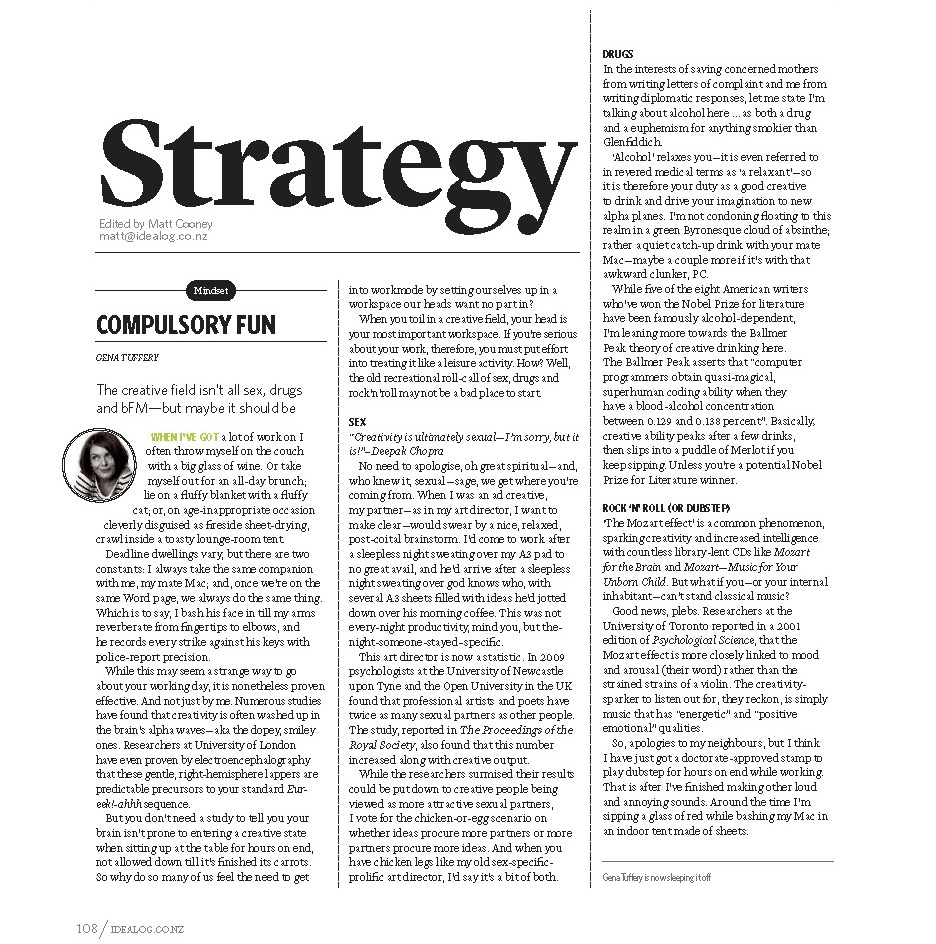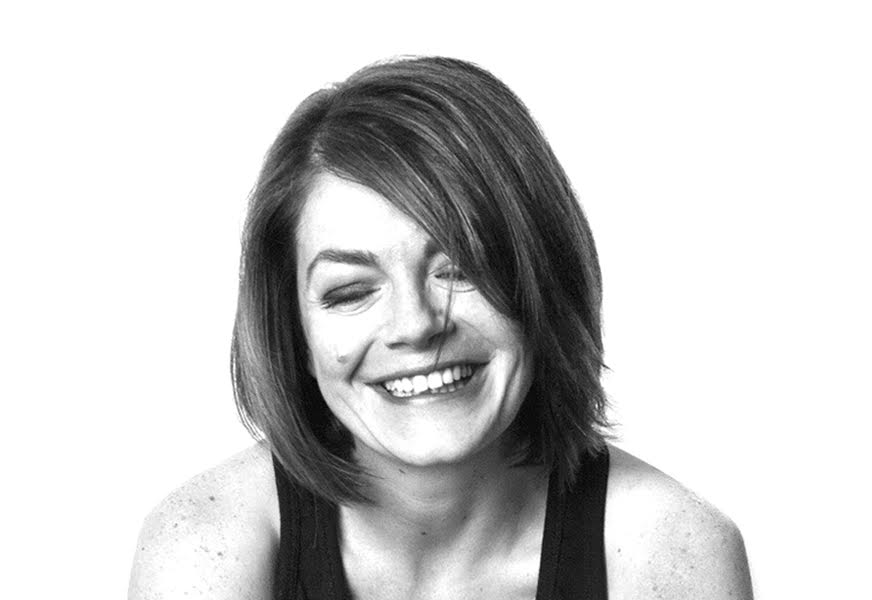
- Firstname/Profession
- Gena
- Writer / Journalist
- 12 Plus years Experience
- Auckland, New Plymouth
-
 11599
11599
Represented: 17/07/17
Columnist for Idealog
About Project
Advertising, marketing and creativity column for Idealog.
Industries
Marketing
Specialties
Content Strategy, Editorial, Journalism
Client
Idealog magazine
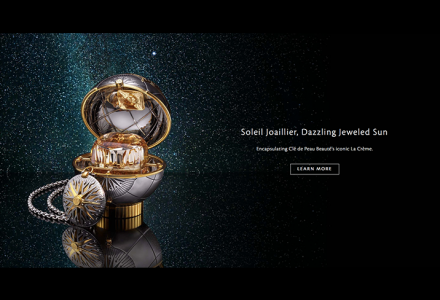
- Clé de Peau Beauté C...
- Beauty & Personal Care
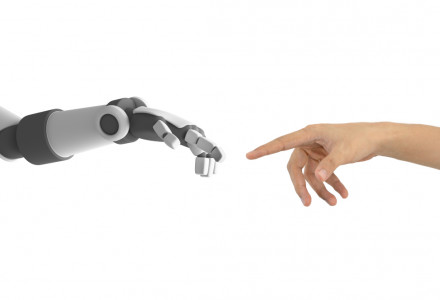
- Conversation Design
- Digital
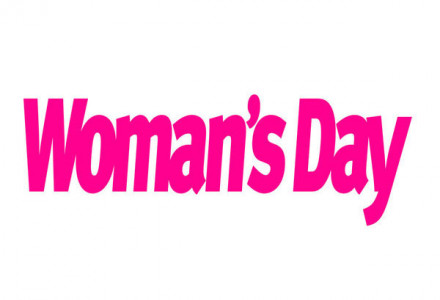
- Sub-Editing
- Media
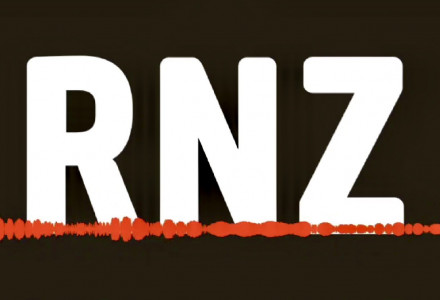
- Radio New Zealand Re...
- Media
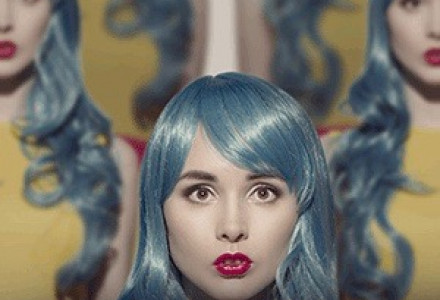
- All Blacks Tours Dig...
- Advertising
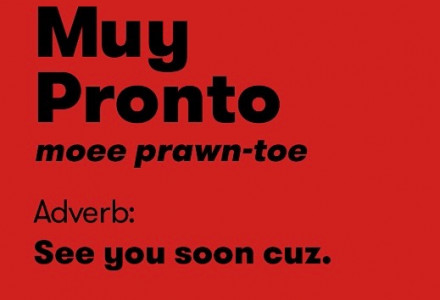
- SEAT (Spanish Car) N...
- Automotive

- BNZ Android Pay Laun...
- Banking
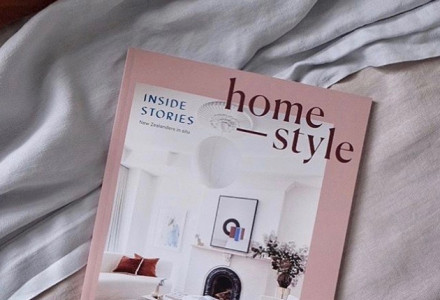
- Deputy Editor for Ho...
- Home & Living
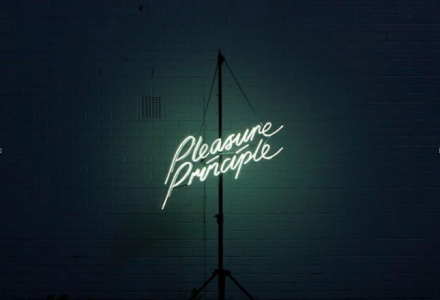
- Columnist for Idealo...
- Marketing
- Auckland City Missio...
- Advertising
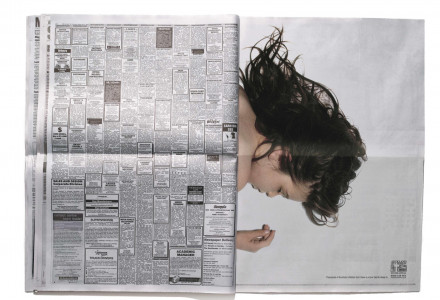
- Auckland City Missio...
- Advertising
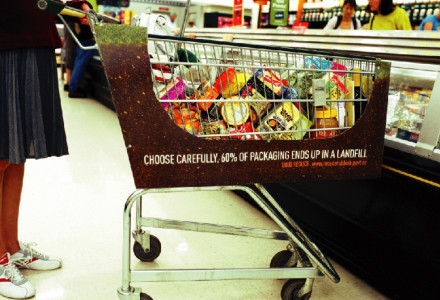
- Auckland Council Rec...
- Advertising
When I’ve got a lot of work on I often throw myself on the couch with a big glass of wine. Or take myself out for an all-day brunch; lie on a fluffy blanket with a fluffy cat; or, on age-inappropriate occasion cleverly disguised as fireside sheet-drying, crawl inside a toasty lounge-room tent.
Deadline dwellings vary, but there are two constants: I always take the same companion with me, my mate Mac; and, once we’re on the same Word page, we always do the same thing. Which is to say, I bash his face in till my arms reverberate from fingertips to elbows, and he records every strike against his keys with police-report precision.
While this may seem a strange way to go about your working day, it is nonetheless proven effective. And not just by me. Numerous studies have found that creativity is often washed up in the brain’s alpha waves – aka the dopey, smiley ones. Researchers at University of London have even proven by electroencephalography that these gentle, right-hemisphere lappers are predictable precursors to your standard Eur-eek!-ahhh sequence.
But you don’t need a study to tell you your brain isn’t prone to entering a creative state when sitting up at the table for hours on end, not allowed down till it’s finished its carrots. So why do so many of us feel the need to get into work mode by setting ourselves up in a workspace our heads want no part in?
When you toil in a creative field, your head is your most important workspace. If you’re serious about your work, therefore, you must put effort into treating it like a leisure activity. How? Well, the old recreational roll-call of sex, drugs and rock’n’roll may not be a bad place to start.
Sex
“Creativity is ultimately sexual. I’m sorry, but it is!” – Deepak Chopra. No need to apologise, oh great spiritual – and, who knew it, sexual – sage, we get where you’re coming from. When I was a fulltime ad creative, my partner – as in my art director, I want to make clear – would swear by a nice, relaxed, post-coital brainstorm. I’d come to work after a sleepless night sweating over my A3 pad to no great avail, and he’d arrive after a sleepless night sweating over god knows who, with several A3 sheets filled with ideas he’d jotted down over his morning coffee. This was not every-night productivity, mind you, but the-night-someone-stayed specific.
This art director is now a statistic. In 2009 psychologists at the University of Newcastle upon Tyne and the Open University in the UK found that professional artists and poets have twice as many sexual partners as other people. The study, reported in The Proceedings of the Royal Society, also found that this number increased along with creative output.
While the researchers surmised their results could be put down to creative people being viewed as more attractive sexual partners, I vote for the chicken-or-egg scenario on whether ideas procure more partners or more partners procure more ideas. And when you have chicken legs like my old sex-specific-prolific art director, I’d say it’s a bit of both.
Drugs
In the interests of saving concerned mothers from writing letters of complaint and me from writing diplomatic responses, let me state I’m talking about alcohol here... as both a drug and a euphemism for anything smokier than Glenfiddich.
‘Alcohol’ relaxes you – it is even referred to in revered medical terms as ‘a relaxant’ – so it is therefore your duty as a good creative to drink and drive your imagination to new alpha planes. I’m not condoning floating to this realm in a green Byronesque cloud of absinthe; rather a quiet catch-up drink with your mate Mac – maybe a couple more if it’s with that awkward clunker, PC.
While five of the eight American writers who’ve won the Nobel Prize for literature have been famously alcohol-dependent, I’m leaning more towards the Ballmer Peak theory of creative drinking here, as attributed to Microsoft CEO Steve Ballmer by researchers xkcd. The Ballmer Peak asserts that “computer programmers obtain quasi-magical, superhuman coding ability when they have a blood-alcohol concentration percentage between 0.129 and 0.138 percent”. It basically asserts that creative ability peaks after a few drinks, then slips into a puddle of Merlot if you keep sipping. Unless you’re a potential Nobel Prize for Literature winner.
Rock ‘n’ roll (or dubstep)
‘The Mozart effect’ is a common phenomenon, sparking creativity and increased intelligence along with countless library-lent CDs like Mozart for the Brain and Mozart: Music for Your Unborn Child. But what if you – or your internal inhabitant – can’t stand classical music?
Good news, plebs. Researchers at the University of Toronto reported in a 2001 edition of Psychological Science, that the Mozart effect is more closely linked to mood and arousal (their word) rather than the strained strains of a violin. The creativity-sparker to listen out for, they reckon, is simply music that has “energetic” and “positive emotional” qualities.
So, apologies to my neighbours, but I think I have just got a doctorate-approved stamp to play dubstep for hours on end while working. That is after I’ve finished making other loud and annoying sounds. Around the time I’m sipping a glass of red while bashing my Mac in an indoor tent made of sheets.
 1150
1150
